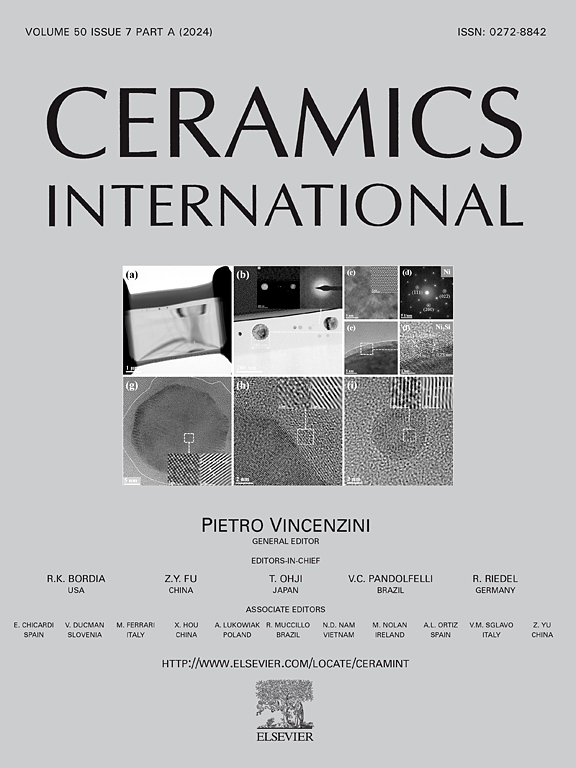3D printing of cordierite glass-ceramics
IF 5.1
2区 材料科学
Q1 MATERIALS SCIENCE, CERAMICS
引用次数: 0
Abstract
Compared to traditional ceramic materials, glass-ceramics can also exhibit superior properties and are now widely used in cutting-edge national defense industries technology, aerospace, electronics, construction, and other fields. In this study, it is for the first time reported that novel photopolymerization 3D printable slurries using cordierite glass ceramic powder were prepared. The effects of slurry properties and printing process parameters on the warpage of the printed samples were studied. Cordierite glass-ceramic parts fabricated using photopolymerization 3D printing and heat treatment processes were studied to evaluate the effects of sintering parameters on the properties of the samples. The obtained additively manufactured cordierite glass-ceramics exhibit excellent microstructural and mechanical properties, with a maximum bending strength of 181 MPa, an increase of 95.66 % compared to that of the previously reported 3D printed cordierite ceramics. The underlying mechanisms of the glass and ceramic phase characteristics influence the density and the mechanical properties during and after the courses of sintering were also investigated and unveiled in detail. This study provides a viable method for manufacturing complex-shaped cordierite glass-ceramic components using 3D printing.
求助全文
约1分钟内获得全文
求助全文
来源期刊

Ceramics International
工程技术-材料科学:硅酸盐
CiteScore
9.40
自引率
15.40%
发文量
4558
审稿时长
25 days
期刊介绍:
Ceramics International covers the science of advanced ceramic materials. The journal encourages contributions that demonstrate how an understanding of the basic chemical and physical phenomena may direct materials design and stimulate ideas for new or improved processing techniques, in order to obtain materials with desired structural features and properties.
Ceramics International covers oxide and non-oxide ceramics, functional glasses, glass ceramics, amorphous inorganic non-metallic materials (and their combinations with metal and organic materials), in the form of particulates, dense or porous bodies, thin/thick films and laminated, graded and composite structures. Process related topics such as ceramic-ceramic joints or joining ceramics with dissimilar materials, as well as surface finishing and conditioning are also covered. Besides traditional processing techniques, manufacturing routes of interest include innovative procedures benefiting from externally applied stresses, electromagnetic fields and energetic beams, as well as top-down and self-assembly nanotechnology approaches. In addition, the journal welcomes submissions on bio-inspired and bio-enabled materials designs, experimentally validated multi scale modelling and simulation for materials design, and the use of the most advanced chemical and physical characterization techniques of structure, properties and behaviour.
Technologically relevant low-dimensional systems are a particular focus of Ceramics International. These include 0, 1 and 2-D nanomaterials (also covering CNTs, graphene and related materials, and diamond-like carbons), their nanocomposites, as well as nano-hybrids and hierarchical multifunctional nanostructures that might integrate molecular, biological and electronic components.
 求助内容:
求助内容: 应助结果提醒方式:
应助结果提醒方式:


